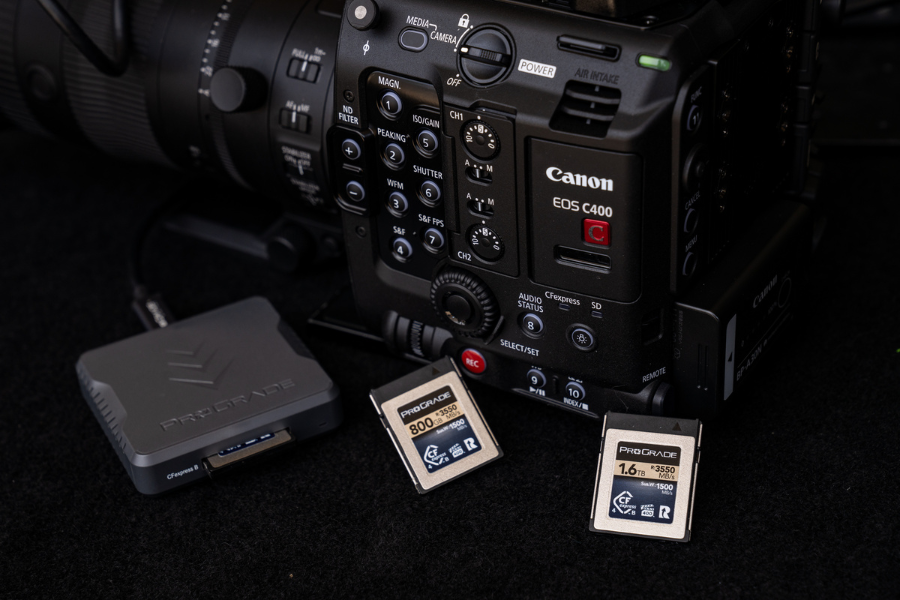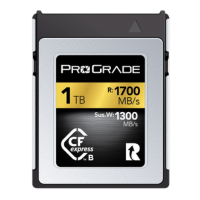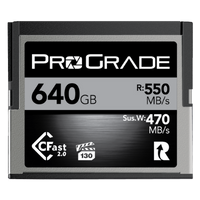Capturing stunning 4K and 8K videos requires more than just a high-quality camera—your choice of memory card is equally important. The wrong card can lead to dropped frames, data corruption, or even lost footage. In this guide, we’ll help you navigate the essentials of choosing the best memory cards for your 4K and 8K video recording needs.
Whether you’re shooting breathtaking landscapes or high-speed action, we’ll show you how to pick the best memory cards for video recording that can handle the demands of high-resolution video. So, keep reading and optimize your 4K and 8K video projects with the right card for every shoot.
This guide is all about SD cards—diving deep into everything you need to know to choose the best SD card for your 4K and 8K video projects. If your camera uses CFexpress Type A or Type B cards, be sure to check out our dedicated CFexpress guide here: CFexpress Memory Card Guide: Understanding Symbols, Types, and Performance Metrics.
Defining Your Needs: Choosing Memory Cards for 4K and 8K Video Recording
When it comes to choosing the right memory card for your video recording needs, it’s essential to first understand exactly what those needs are. Here’s the good news: you don’t have to get caught up in every technical specification. All your needs essentially come down to one thing—bitrate (also called data rate).
Data rate or bitrate refers to the amount of data processed over a given period of time in digital media. In the context of video recording, it is the rate at which video data is written to a storage medium and is usually measured in megabits per second (Mbps). In short, the bitrate determines the amount of data recorded per second of video.
It might seem intuitive to think that 8K, with its higher resolution, has a higher data rate than 4K. After all, each frame of a 4K video (3,840 x 2,160 pixels) stores around 8.3 million pixel values, while an 8K frame (7,680 x 4,320 pixels) contains information about 33 million pixels. So, naturally, 8K has four times the number of pixels per frame, suggesting it would be four times as data-intensive. However, that’s not always the case—sometimes, 4K can demand much more from your memory card than 8K, depending on the settings you use.
The actual data rate depends on more than just the number of pixels; it’s also influenced by, among all else, the frame rate and color depth. For instance, if you’re shooting 4K at 120 frames per second (fps), you already match the data rate of 8K if the latter is shot at 30fps. Now, shoot that same 4K video in 12-bit color depth while the 8K video is 10-bit, and you exceed the 8K data rate by a significant margin.
The difference becomes even more pronounced when you consider compression methods. A minute of 4K video shot with All-Intra compression, where each frame is fully detailed, could consume 8GB of storage. In contrast, the same duration of 8K footage using Long GOP compression, which only saves changes between frames, might use just 5GB. So, even though 8K captures more pixels per frame, the data rate for 4K can be significantly higher depending on the frame rate, color depth, and compression settings.
By looking past the resolution and considering the data rate, you can quickly determine whether the card you are considering is designed for intense 4K and 8K settings and can handle the broader demands of high-resolution video.
The key is to match your card to the specific requirements of your projects, ensuring you have the speed, capacity, and reliability needed to capture every detail, no matter the resolution.
Determining the Right Memory Card Speed for Your 4K and 8K Projects
Step 1: Determine your camera’s video bitrate. Your camera’s user manual or the manufacturer’s website usually provides detailed information about the data rate of different codecs and recording settings. Additionally, many cameras include bitrate details within their settings menu, allowing you to quickly see the data rate for your desired video configuration.
Step 2: Convert bitrate to byte rate. To determine the appropriate memory card write speed – the speed at which you can record data on the card – you need to convert the video bitrate from megabits per second (Mbps) to byte rate in megabytes per second (MB/s). This is because memory card speeds are mostly denoted in MB/s. This process is very straightforward. Since there are 8 bits in a byte, you convert the bitrate to byte rate by dividing it by 8. For example, a video bitrate of 400 Mbps converts to 50 MB/s (400 ÷ 8 = 50). This tells you the minimum write speed your memory card must have to record video without lag or dropped frames, ensuring smooth, reliable footage.
Step 3: Include a safety margin. Camera manufacturers usually provide approximate values rather than precise numbers regarding bitrate, so it’s wise to add 10-20% to your calculations. Also, if your camera uses a variable bitrate (VBR)—a technique that dynamically adjusts based on the scene’s complexity—be sure to base your calculations on the peak bitrate, not the average. This approach accounts for the highest data demands, keeping you safely within the limits your memory card can record.
Example:
Say we are shooting 4K video at 29.97fps and with maximum color depth using a Canon EOS 5D Mark IV camera.
Step 1: According to Canon’s official website, this is approximately 500 Mbps.
Step 2: To convert 500 Mbps to MB/s, we divide 500 Mbps by 8 and get 62.5 MB/s.
Step 3: Adding a 20 percent safety margin means multiplying 62.5 MB/s by 20%, which equals 75 MB/s.
Based on that, we know we need a memory card with a minimum sustained write speed of 75MB/s to handle the data rate of the 4K video we plan to shoot. The emphasis is on the word “sustained.” This brings us to the next important topic: video speed class.
Write Speed vs. Video Speed Class
Memory card write speeds, as advertised by manufacturers, can sometimes be misleading. This is particularly problematic with consumer-grade cards from less reputable manufacturers, where write speed markings on the cards often represent the absolute peak speed a card can achieve under ideal conditions, not the sustained write speed required for continuous video recording. When maximum speeds are advertised, but the card’s performance in real-world scenarios falls short, it leads to a myriad of problems.
For example, if a memory card with an advertised peak write speed of 100 MB/s is used to record a 4K video with a 75 MB/s data rate, but the card can only sustain half of that advertised speed, it will lead to dropped frames, corrupted files, or even complete recording failures. To address this issue, the Video Speed Class standard was developed.
Video Speed Classes are marked on a card by the letter “V” followed by a number, such as V30, V60, or V90. These numbers represent the minimum sustained write speed in megabytes per second (MB/s) for which a memory card is tested and rated. These classes ensure that a memory card can consistently handle the data rate required for high-resolution video recording, like 4K or 8K, without dropping frames or causing interruptions.
By choosing a card built by a reputable manufacturer and with the appropriate Video Speed Class rating, you ensure that your footage remains smooth and uninterrupted, avoiding the pitfalls of relying on peak speeds that may not hold up during sustained recording sessions.
Example:
Let’s compare two scenarios using the Canon R5 camera:
A) Shooting 4K video at 59.97fps with IPB codec (MP4, H.265, Canon Log off).
B) Shooting 8K video at 29.97fps with the same settings as above.
Checking the manual, we see that the 4K video with these settings has a bitrate of 340 Mbps, and the 8K video has a bitrate of 470 Mbps. Using the above-presented formula to convert bitrate into byte rate and adding a 20% safety margin, we see that a 4K video requires a memory card with a sustained write speed of 34.5 MB/s and an 8K video with 70.5 MB/s.
So, in the case of example A, a V60-rated Memory Card is required for shooting a 4K video with these settings to ensure smooth and reliable recording.
In the case of example B, however, a V90-rated Memory Card is necessary for shooting an 8K video.
Determining the Right Memory Card Capacity for Your 4K and 8K Projects
The right memory card capacity for your 4K and 8K video shoots depends on a combination of your video settings, project requirements, and workflow preferences. By carefully considering these factors, you can select a memory card that ensures you have ample storage for your 4K and 8K projects, allowing you to focus on capturing the best possible footage without worrying about running out of space. But how do you determine the right capacity for your specific needs?
You can use the same bitrate you used to determine the required write speed of the card to estimate the necessary memory card capacity. Here’s how:
Step 1: Estimate your shooting duration at a given bitrate. Determine how long you plan to record and with what settings.
Step 2: Calculate how much space in megabytes (MB) one minute of video requires with your settings. Since bitrate tells you the amount of data recorded per second of video, divide it by 8 to convert megabits into megabytes and multiply this number by 60 to get the card space you need to shoot one minute of video with your specific settings.
Step 3: Calculate total storage need. Multiply the estimated shooting duration by the storage required for one minute of video. This gives you the total amount of memory card space needed for your entire shoot.
Example:
Let’s determine what capacity memory card you need to shoot 30 minutes of 8K video with a bitrate of 470 Mbps.
Step 1: Estimated duration, 30 minutes at 470 Mbps.
Step 2: To get how much space one minute of 8K video with a data rate of 470 Mbps requires, divide 470 Mbps by 8 (to get byte rate per second) and multiply by 60 seconds (to get byte rate for one minute). In this case:
470 Mbps : 8 = 58.75 MB/s
58.75 MB/s x 60s = 3,525 MB/min
Step 3: Once you know how much space a one-minute clip requires, it’s a no-brainer to figure out how much space a 30-minute video with these exact settings takes up.
3,525 MB/min x 30 min = 105,750 MB
To convert MB (megabytes) into GB (gigabytes), we divide 105,750 MB by 1,024 (as there are 1,024 megabytes in a gigabyte) and get that we need a little over 103 GB to shoot 30 minutes of 8K video with a bitrate of 470 Mbps.
Now, whether you shoot it all on one 128 GB memory card or on two 64GB cards is entirely up to you. If you’re capturing extended footage or working on long-form projects, you’ll likely want a high-capacity memory card—128GB memory card or even 256GB memory card—to avoid frequent card swaps, which can disrupt the recording process.
On the other hand, if you typically shoot shorter clips or have the opportunity (perhaps even a need) to offload footage frequently, two 64GB memory cards might suit you better.
Pro-Grade Tips for Choosing Memory Cards for 4K and 8K Video Recording
Now that we have covered speed and capacity. Here are some essential tips to ensure you get the best performance and reliability for your high-resolution video projects:
1. Prioritize High Read Speeds
For 4K and 8K video recording, both read and write speeds are critical. A high write speed ensures smooth recording without dropped frames, while a high read speed significantly improves workflow efficiency in post-production. Faster read speeds mean quicker file transfers from the card to your computer, which is essential when dealing with large 4K and 8K files. Look for cards with high read speeds (250 MB/s or higher) to save time during editing and backup.
2. Opt for UHS-II Cards Over UHS-I
UHS-I and UHS-II refer to the Ultra High-Speed bus interfaces of SD cards. UHS-I cards handle data transfer speeds up to 104 MB/s, while UHS-II cards can reach speeds up to 312 MB/s due to a second row of pins. For 4K and 8K video projects, UHS-II cards are highly recommended as they offer the higher data transfer rates needed to manage large video files efficiently and reduce waiting times during file transfers.
3. Consider Investing in a Dedicated High-Speed Card Reader
A dedicated high-speed card reader is an invaluable tool for handling large amounts of data quickly and efficiently. Built-in card readers on laptops or using your camera’s data cable often can’t fully utilize the speed capabilities of UHS-II cards. A high-quality dedicated card reader will significantly reduce transfer times, especially when dealing with the large file sizes typical of 4K and 8K video. For example, ProGrade Digital SD Card Readers can transfer 1.25GB of data per second, and that from two memory cards simultaneously.
4. Look for Durable and Reliable Cards
High-resolution video recording often occurs in challenging environments. Choose memory cards that are built to withstand tough conditions—look for those that are shockproof, waterproof, temperature-resistant, and X-ray-proof. Additionally, cards with built-in error correction and wear-leveling technology help maintain data integrity and extend the card’s lifespan, ensuring your footage is safe and secure.
Final Words: Memory Cards for 4K and 8K Video
We hope you found this guide helpful in choosing the right memory card for your 4K and 8K video projects! Remember, the right card makes all the difference in capturing smooth, high-quality footage without any hassle. If you need more guidance or have questions about which card is best for your setup, feel free to reach out—we’re here to help. And don’t forget to browse our selection of high-performance memory cards designed specifically for high-resolution video recording. Happy shooting!





